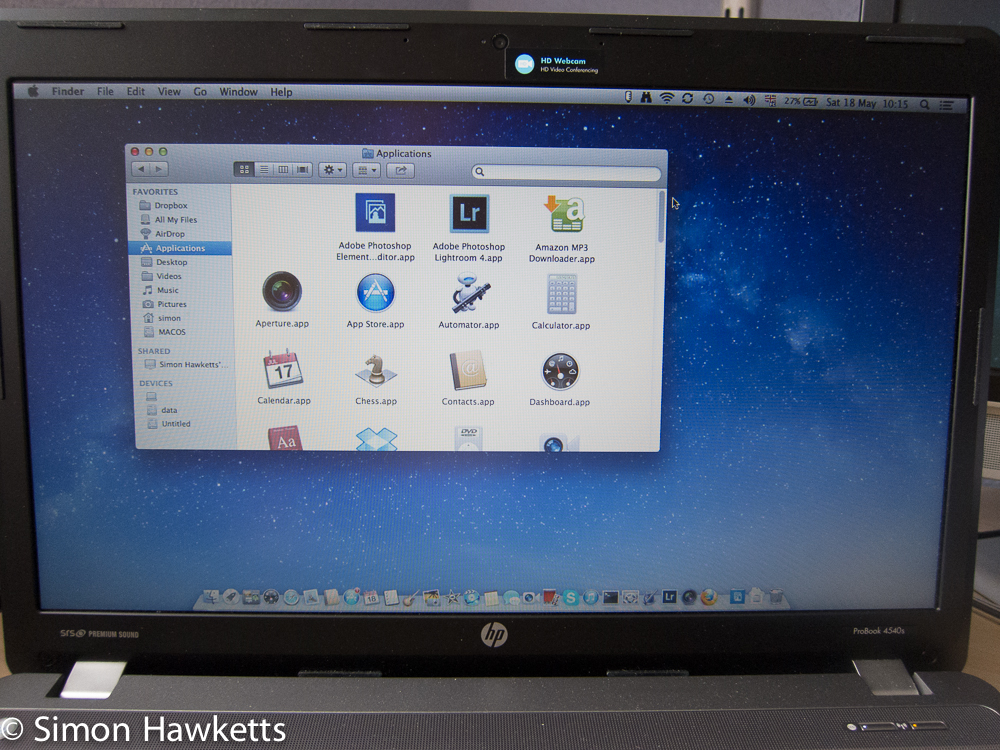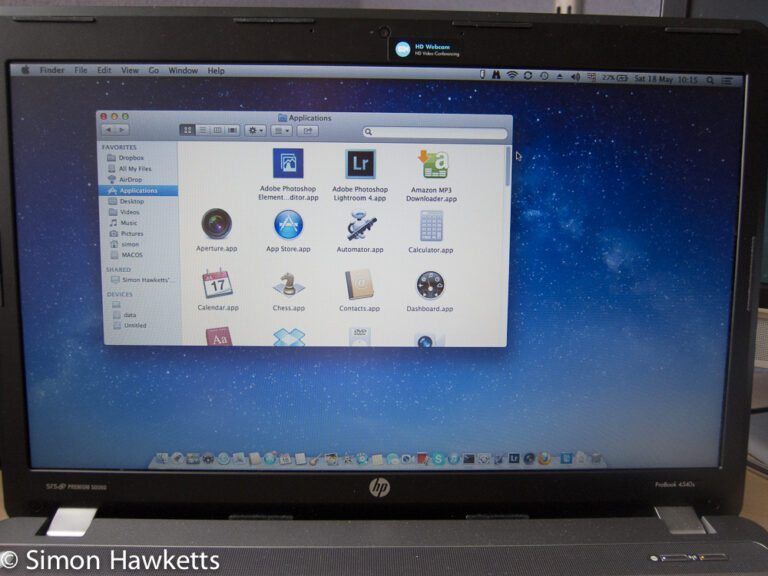Probook 4540s Hackintosh – OS-X install & efi boot

The main reason I bought the Probook 4540s was because of it’s hardware spec which is very similar to a Macbook and therefore well supported by OS-X. I use a Mac for my photo processing with Lightroom so I wanted to try to get OS-X running for when we go on holiday etc.
The first part of installing OS-X was to create a bootup usb stick using the software from the tonymacx86 site. This uses a legal copy of OS-X Mountain Lion which I had bought for my iMac to create a boot/install system which will run on an intel based machine.
My first attempt at booting the laptop from this machine resulted in a black screen, but I found that if I passed in the parameters “useKernelCache=no GraphicsEnabler=no -r -f” I could get to the installer screen. From this point I used the mac disk utility to format the partition I was installing OS-X to as HPFS+ and then started the install going. The install process itself is easy enough to negotiate – any options which need to be selected are obvious and involve just one reboot prior to setting user accounts etc.
Once the install was complete I had OS-X installed on my probook ! The only issues I had were
- The wifi/bluetooth adapter is not supported by OS-X and was not recognized
- I could only boot OS-X with the usb stick plugged in
WiFi
The wifi situation was also affecting Linux because the internal adaptor was not being recognized in linux either. I could more easily solve that problem in linux because of the wider hardware support in that OS, so I tried to find a usb wifi dongle that would work in Mountain Lion. This proved to be more problematic that I thought because althought I found a couple of devices which were listed as being supported in OS-X, it turned out they were supported in 10.5 or 10.7 but not 10.8. I eventually solved this by downloading the driver for one of the devices I tried, and Edimax EW-7811Un, from the realtek site directly. This got me going with wifi, and then I discovered a direct replacement for the internal half-size pci-e wifi card from a supplier in Hong Kong. This was an Atheros AR9280 card which cost me 3.60 pounds + 2.99 pounds postage. Once this turned up and was fitted the native OS-X airport utility found my network and connected immediatly.
Booting
Booting the machine turned out to be a real problem. I wanted to run the machine in efi mode which should have been easier to multiboot but there is limited support for efi booting of OS-X. It took me about two weeks to finally get the system sorted, but in the end I did by using two bootup menu systems. The first menu system I used is called refind. I set this up with manual stanzas to load Linux and Windows 7. I couldn’t use refind to load OS-X because OS-X needs additional kernal drivers (or kexts) to be loaded so I used a different menu system for OS-X called clover which allows these drivers to be loaded. I set refind to have an entry which points to clover, and set clover to boot OS-X by default with no delay. This gives me a single menu system with just three entries.
You would think that is would have been easier to just use clover and have a single boot menu, but I couldn’t get it to boot either Windows or Linux successfully. So this turned out to be the only way I could get all three OS’s to run.
The probook efi boot option took a long time to sort out, not because it is complex but it all came down to trial and error to find how to configure it. If I chose efi file from the boot menu (which appears when you press F9 on boot up) I could select my refind menu and choose any OS, but I couldn’t get the refind menu to show by default. After several days of experimenting I found that I needed to rename the refind directory to Boot and change the name of the refind.efi file to bootx64.efi. It seems that the Probook has this location hard wired into it’s boot system.
Once I had made that change I could boot any OS although I needed to make one more change to get Windows 7 to boot. It seems that Windows 7 will only boot in efi mode if the bios is set to efi legacy mode. I know this sound like Windows is actually booting in MBR mode, but it isn’t. The menu entry points to the Windows bootmgfw.efi file, but it will only run in efi/legacymode. Once that was done all OS’s will boot.
If anyone wants any additional info on clover/refind etc – comment/ask below.

